Dodge Journey: Valve, exhaust gas recirculation (EGR), 2.0L Diesel
Description
The EGR valve is mounted to the intake manifold.
Operation
The engines use Exhaust Gas Recirculation (EGR) systems. The EGR system reduces oxides of nitrogen (NOx) in engine exhaust and helps prevent detonation (engine knock). Under normal operating conditions, engine cylinder temperature can reach more than 1649ºC (3000ºF). Formation of NOx increases proportionally with combustion temperature. To reduce the emission of these oxides, the cylinder temperature must be lowered. The system allows a predetermined amount of hot exhaust gas to recirculate and dilute the incoming air/fuel mixture. The diluted air/fuel mixture reduces peak flame temperature during combustion.
Removal
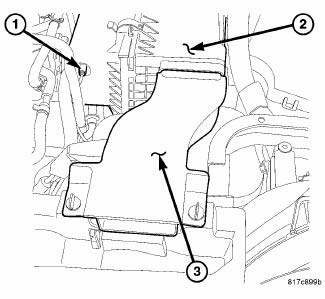
Fig. 74: Air Inlet Duct
1. Remove air inlet duct (3).
2. Disconnect negative battery cable.
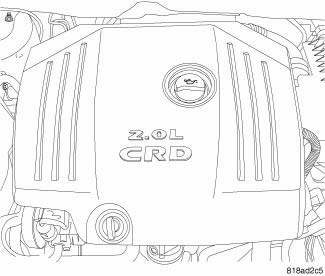
Fig. 75: ENGINE COVER-REMOVAL
3. Remove engine cover.
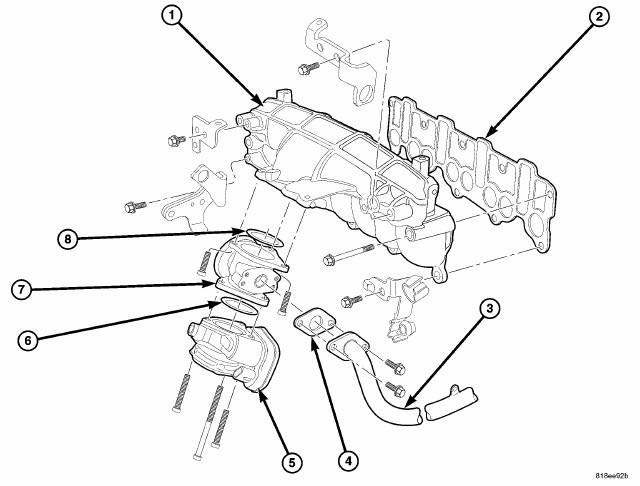
Fig. 76: Intake Manifold
4. Disconnect EGR valve vacuum line.
5. Disconnect EGR pipe (3) at EGR valve.
6. Remove air inlet tube from intake manifold flap motor (5).
7. Remove intake manifold flap motor (5).
8. Remove EGR valve retaining bolts and remove EGR valve (7).
Installation
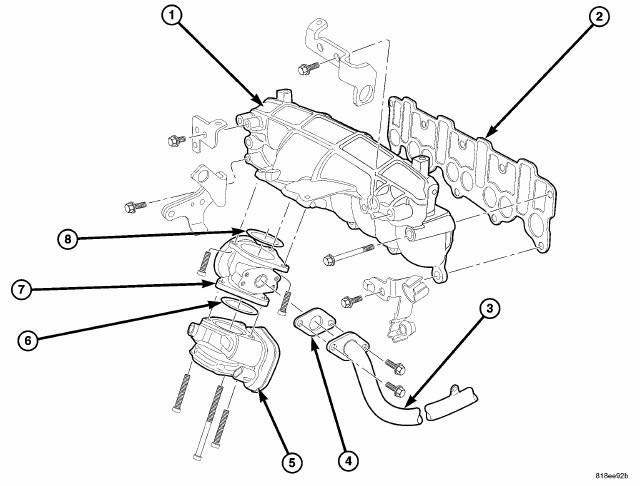
Fig. 77: Intake Manifold
1. Inspect EGR and intake manifold flap motor o-rings (6,8) for damage. Replace as necessary.
2. Install EGR valve (7) to intake manifold. Torque retaining bolts to 10.m (88 lbs.in.).
3. Install intake manifold flap motor (5) to EGR valve (7). Torque retaining bolts to 10 N.m (88 lbs.in.).
4. Inspect EGR pipe gasket (4)for damage, replace as necessary.
5. Connect EGR pipe (3) to EGR valve. Torque retaining bolts to 20N.m (177 lbs.in.).
6. Connect EGR valve vacuum line.
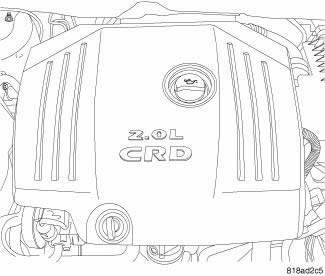
Fig. 78: Engine Cover
7. Install engine cover.
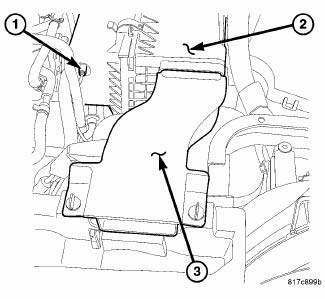
Fig. 79: Air Inlet Duct
8. Connect negative battery cable.
9. Install air inlet duct (3).
 Solenoid, exhaust gas recirculation (EGR), 2.0L Diesel
Solenoid, exhaust gas recirculation (EGR), 2.0L Diesel
Description
Fig. 71: Exhaust Gas Recirculation (EGR) Solenoid - 2.0L Diesel
- EGR solenoid electrical connector
- EGR vacuum harness
The EGR solenoid (4) is mounted to a bracket attached t ...
 Exhaust System
Exhaust System
...
See also:
Radio
STANDARD PROCEDURE
RADIO BACKUP
The radio hard disk drive (HDD) can be backed up to save customer data in the
event that a radio replacement is
required. This procedure can only be done with all ...
Oil
Description
For engine oil type and capacity, refer to Vehicle Quick Reference/Capacities
and Recommended Fluids -
Description .
Standard Procedure
STANDARD PROCEDURE - ENGINE OIL AND FILTER CHA ...
Fascia, front
REMOVAL
Fig. 1: Pushpins
1. Release hood latch and open hood.
2. Remove the pushpins for the fascia (2) at the radiator support.
Fig. 2: Pop Rivets
3. Hoist and support vehicle on safety st ...
